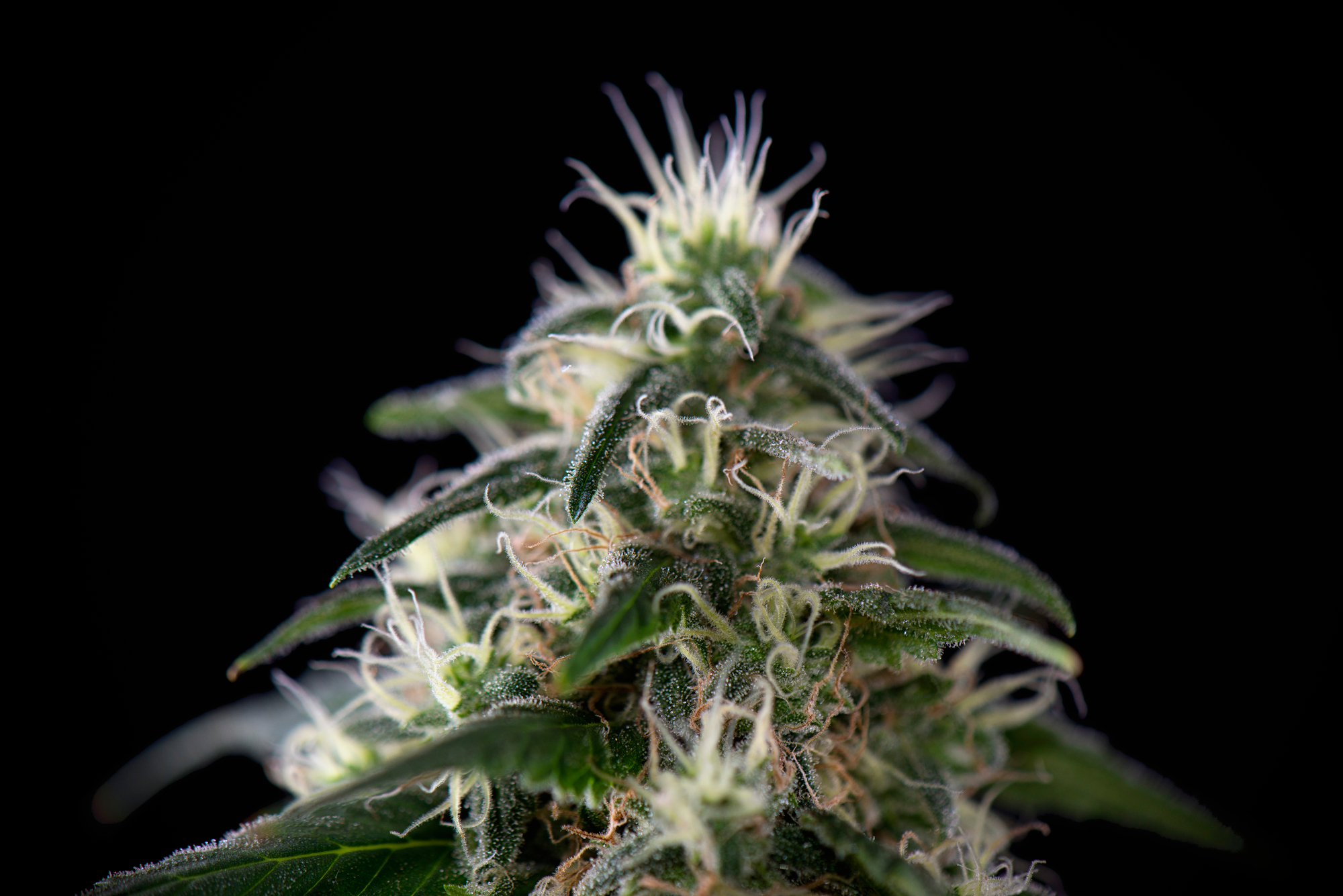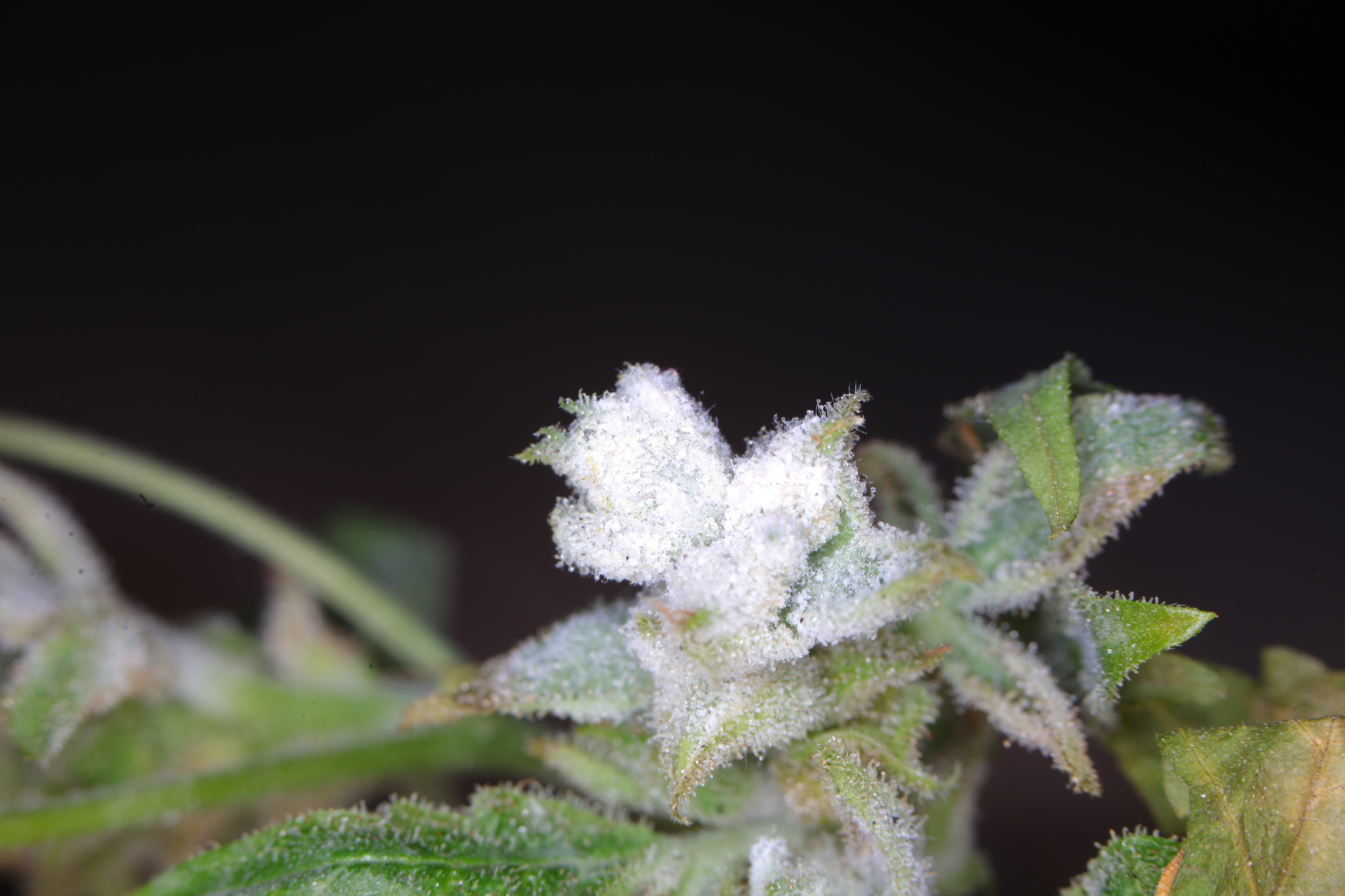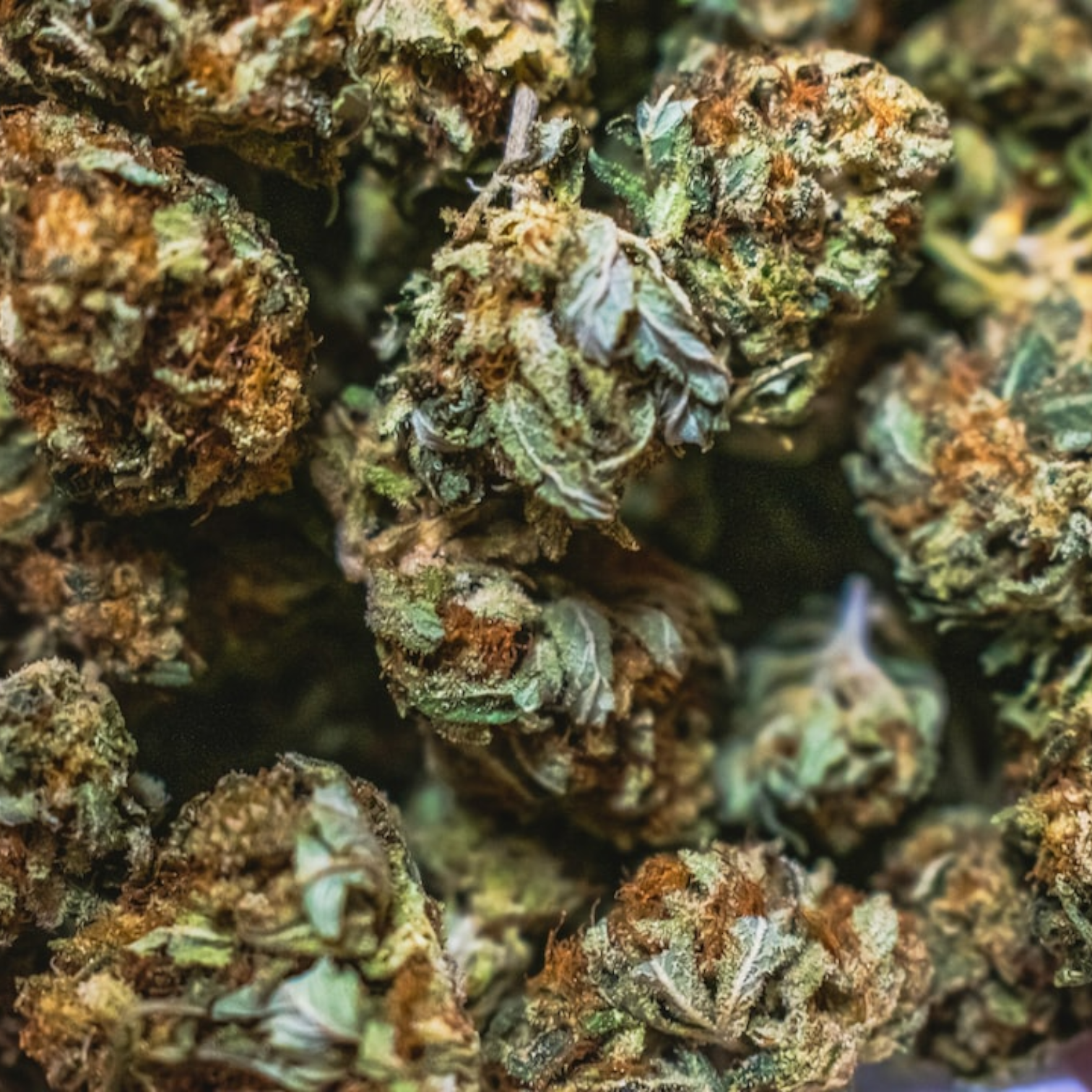

Moldy Weed vs. Trichomes: Your Essential Guide
Cannabis lovers, whether they’re home growers or just really into their health, know that diving into that green world means paying close attention to the little things.
Spotting mold and checking out trichome maturity are super important – they can totally change your cannabis game and keep you healthy, too.
In this deep dive, we're going to look at why it's super important to tell the difference between a moldy weed and the good stuff full of healthy trichomes. Getting the hang of these little details could be your ticket to not just a better high but also keeping yourself healthy.

Moldy Weed: The Hidden Menace
Marijuana mold is a real nightmare, not just because it ruins the quality of the plant, but it can also be super bad for your health. While mold is generally bad news for anything organic, it's a bigger deal for cannabis because of how often people inhale it. When you're frequently in contact with it and especially when it's finely ground and inhaled, those nasty grey mold spores can get way down into your respiratory system, which could lead to some serious problems. Some types of mold on cannabis can even be toxic and cause allergic reactions.
But how do you spot it?
Signs and Hazards of Mold On Growing Weed
Mold shows up as dark or white spots and might come with a musty smell. It's not just a nuisance; it can mess with your breathing or make conditions like asthma or bronchitis worse. Some molds can produce mycotoxins, nasty stuff that's toxic to humans and can cause serious health issues, even in tiny amounts.
Visible Spots or Discoloration
One clear sign you've got mold on your weed is if you spot any discolored patches or spots. Mold can show up in a bunch of different colors, like white, black, green, or gray. These spots might look fuzzy and can be either clumped together or scattered all over your weed.
Musty or Earthy Smell
Another sign of mold on weed is a musty or earthy smell. Mold has a distinct odor that can be described as damp and musty, which causes bud rot. If you notice an unusual smell coming from your weed, it could be a sign that mold is present.
Changes in Texture
Mold can mess with how your weed feels, too. If it starts feeling slimy or sticky, that's a heads-up that mold might be growing on it. This weird texture change? Yeah, it's because of the moisture from the mold.
Respiratory Symptoms
Breathing in mold spores from weed can mess with your lungs, making you cough, wheeze, and have a hard time catching your breath. It's all because those mold spores irritate your lungs and airways.
Allergic Reactions
Besides the usual respiratory symptoms, some folks might get allergic reactions from moldy weed, like sneezing, a runny nose, itchy eyes and skin, or even hives. If you're getting these symptoms after handling or smoking weed, it's probably a heads-up that there's mold in there.
Understanding Mold and Powdery Mildew in Cannabis

When it comes to cannabis health hazards, both mold, and cannabis powdery mildew thrives at the top of the concern list for growers and consumers alike. Though they may appear similar to the untrained eye, their impacts on cannabis can significantly differ. Mold is a broader term that includes various fungal species, often appearing as fuzzy or slimy spots in different colors like white, green, or black. This unwelcome guest thrives in environments with high humidity and poor ventilation, leading to the potential ruin of an entire cannabis batch if not promptly addressed.
Powdery mildew, on the other hand, manifests as white, powdery spots on the leaves and stems of cannabis plants, spreading quickly in both dry and humid conditions. Unlike mold, which can infiltrate the interior of the cannabis bud, powdery mildew typically remains on the surface. However, it can still severely impact the photosynthesis process, ultimately stunting plant growth and reducing yield.
Battling these intruders requires a keen eye and immediate action. For growers, improving air circulation, reducing humidity, and keeping the grow space clean are essential preventive measures.
Consumers should meticulously inspect their purchased cannabis for any signs of these fungal pests before use. Understanding the distinction between cannabis mold and powdery mildew, their effects on cannabis, and how to prevent their occurrence is crucial for ensuring the health and safety of both the product and its users.
Trichomes 101: The Cannabis Crystal
In the cannabis universe, trichomes are pretty important. These little crystal-like outgrowths on cannabis buds are more than just eye candy – they're the real deal when it comes to strength and flavor.
Cannabis Trichomes are where all the good stuff is stored – the cannabinoids, terpenes, and flavonoids that give cannabis its therapeutic vibes and mind-altering effects.
The Role of Trichomes
Trichomes are like a plant's personal bodyguards against predators. But for those in the know, they're also a sign that things are ready to go; packed with cannabinoids, they give you a sneak peek at the flavor and the kind of buzz you're in for. Trichomes also protect the plant from UV rays and help it retain moisture, all while giving off that sticky, icky resin we all know and love.
Different Types of Trichomes
There are three main types of trichomes on the cannabis plant: bulbous, capitate-sessile, and capitate-stalked. The differences between these types come down to their physical appearance and potency. Bulbous trichomes are the smallest and least potent; capitate-sessile trichomes are medium-sized and slightly more potent, while the largest and most potent are the capitate-stalked trichomes. These are the ones you really want to see when checking out your weed. They're large and have a mushroom-like cap that holds most of the good stuff.
When to Harvest Based on Trichomes
Trichomes are also used as a signifier of when it's time to harvest your cannabis. As the plant matures, the trichomes will change in color from clear to milky white or amber. Depending on the desired effects of your weed, you can harvest at different stages. If you want a more uplifting and euphoric high, harvest when the trichomes are mostly milky white. For a more relaxing and sedative high, wait until they turn amber.
Identifying Moldy Weed vs. Healthy Trichomes

The line between a healthy high and a hazardous one can be as distinct as the line that divides mold from a well-developed trichome. Yet, this demarcation is nuanced and requires careful observation.
Visual and Olfactory Cues for Mold Detection
A visual inspection of cannabis should always include looking for out-of-place discolorations and textures. While not all mold is visible to the naked eye, a magnifying glass is a useful tool to identify mold in the grow room. Equally important is the scent. Healthy trichomes are characterized by their glittering, sparkling appearance, standing tall and slender with thin resinous glands separated by tiny spaces. These glands feature tiny hairs that appear either transparent or milky white and are topped with mushroom-like caps.
A musty smell is a sign to proceed with caution. If anything looks or smells off, it's best to err on the side of caution and dispose of the weed.
Trichome Evaluation for Potency
Unlike mold, trichomes are a must-have on your cannabis; they're totally natural and super important for their strength and quality. You can tell how potent your weed might be by checking out the size and color of the trichomes. Bigger and well-developed trichomes? That usually means stronger weed.
Dissecting the Difference
Trichomes are frost-like, sometimes sparkling, and should exude an inviting aroma of the tincture of the plant. They are crisp to the touch and, under magnification, bear a fine structural beauty. Mold, on the other hand, is a rough, grim presence that is equally uninviting to the eyes and touch. Mold also typically has a musty or unpleasant smell. By simply observing the physical characteristics, one can easily distinguish healthy trichomes from mold growth on cannabis plants.
What Moldy Cannabis and Trichome Quality Mean for Your Health
Hey, steer clear of moldy weed, seriously. It can totally mess up the taste and quality of your stash, not to mention it's a legitimate health hazard. Breathing in mold spores from bad weed can mess with your respiratory system, trigger allergies, and might even cause long-term damage to your lungs. But on the flip side, if you spot those high-quality, sticky trichomes, you're in for a treat. They mean the strain is top-notch, and you're in for a stellar experience. So, make it a habit to check your weed for mold and aim for those sparkling trichomes!
Knowing how to spot mold and understanding why those shiny trichomes matter can totally change the game when it comes to picking your cannabis. By keeping an eye out for visual tips, trusting your nose, and getting why trichomes are key for that quality high, you're all set for a safe and fun time. Next time you're inspecting your weed, look out for those tiny crystals – they're your ticket to a fantastic high.
So, remember to watch out for moldy weed and also to appreciate the magic of trichomes in your cannabis. They're pretty much a sign of cannabis flower quality and potency.
Best Practices for Storage and Post-Harvest
The story of growing cannabis doesn't end with harvest. Proper storage and preservation of trichomes continue the saga of fine cannabis and the narrative of a healthy community.
Post-Harvest Processing Techniques
Post-harvest tricks like curing and processing really make a difference in trichome quality. Curing is all about drying and aging the buds to boost their flavor and potency. By keeping those trichomes intact through gentle drying and handling, you're basically ensuring your cannabis is top-notch.
Storing Cannabis: A Trichome Affair
Keeping those trichomes intact is all about how you store your stash. You gotta use the right containers and keep things cool, dark, and steady in terms of temperature and humidity. Any cannabis lover knows this is the way to go. Ditch the plastic bags or containers; they're moisture magnets and can mess up your trichomes.
Enjoying Your Cannabis to the Fullest
Trichomes are more than just a feature of cannabis – they're key to its effects and quality. Knowing how to spot healthy trichomes, steer clear of moldy weed, and properly
All Things Considered
To wrap it up, telling the difference between mold and those cool trichomes on your weed is key to a great time. Keep an eye on looks, smell, feel, and any weird health stuff as we talked about, and you'll be spotting mold in no time while totally appreciating the awesome trichomes. Listen to what your senses are telling you, look after yourself, and remember that how you store, handle, and check your weed really matters for keeping it top-notch. Armed with this know-how, you'll get way more clued up on your cannabis, make smarter choices, and fully enjoy every puff worry-free. Stay sharp, stay safe, and have fun with your weed.
Frequently Asked Questions (FAQs)
Q: How can I differentiate between mold and trichomes on my harvested weed?
A: When examining your weed, look for visual cues such as fuzzy or discolored patches for mold, while trichomes appear as glistening, crystal-like structures. Pay attention to the aroma, texture, and any adverse health effects to make an informed distinction.
Q: Is it safe to consume weed with trichomes?
A: Trichomes are natural resin glands in cannabis flowers containing cannabinoids, terpenes, and other compounds that contribute to the potency and aroma of weed. Consuming weed with abundant trichomes is safe and often indicates high quality.
Q: What should I do if I suspect mold contamination in my harvested weed?
A: If you suspect mold presence in your weed, refrain from consuming it to avoid potential health risks. Properly dispose of the contaminated batch and take preventive measures in storage and handling to minimize mold exposure and growth in the future.
Q: How can I store my harvested weed to prevent mold formation?
A: To prevent mold growth, store your harvested weed in a cool, dark, and dry environment with proper ventilation. Use airtight containers, desiccants, or humidity packs to maintain optimal moisture levels and inhibit mold development.
Q: What are the health risks associated with smoking moldy weed?
A: Smoking moldy weed can lead to respiratory issues, allergic reactions, headaches, nausea, and other adverse health effects. It's essential to prioritize your well-being by avoiding mold-contaminated weed and opting for clean, uncontaminated cannabis products.
For further inquiries or detailed guidance on weed inspection, storage, or consumption, feel free to reach out to us for personalized assistance and support. Your health and satisfaction are our top priorities, and we're here to ensure a safe and enjoyable experience with your harvested weed.











Leave a comment